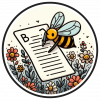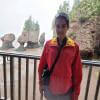With new technologies revolutionizing data collection, wildlife researchers are becoming increasingly able to collect data at much higher volumes than ever before. Now we are facing the challenges of putting this information to use, bringing the science of big data into the conservation arena. With the help of machine learning tools, this area holds immense potential for conservation practices. The applications range from online trafficking alerts to species-specific early warning systems to efficient movement and biodiversity monitoring and beyond.
However, the process of building effective machine learning tools depends upon large amounts of standardized training data, and conservationists currently lack an established system for standardization. How to best develop such a system and incentivize data sharing are questions at the forefront of this work. There are currently multiple AI-based conservation initiatives, including Wildlife Insights and WildBook, that are pioneering applications on this front.
This group is the perfect place to ask all your AI-related questions, no matter your skill level or previous familiarity! You'll find resources, meet other members with similar questions and experts who can answer them, and engage in exciting collaborative opportunities together.
Just getting started with AI in conservation? Check out our introduction tutorial, How Do I Train My First Machine Learning Model? with Daniel Situnayake, and our Virtual Meetup on Big Data. If you're coming from the more technical side of AI/ML, Sara Beery runs an AI for Conservation slack channel that might be of interest. Message her for an invite.
Header Image: Dr Claire Burke / @CBurkeSci

Explore the Basics: AI
Understanding the possibilities for incorporating new technology into your work can feel overwhelming. With so many tools available, so many resources to keep up with, and so many innovative projects happening around the world and in our community, it's easy to lose sight of how and why these new technologies matter, and how they can be practically applied to your projects.
Machine learning has huge potential in conservation tech, and its applications are growing every day! But the tradeoff of that potential is a big learning curve - or so it seems to those starting out with this powerful tool!
To help you explore the potential of AI (and prepare for some of our upcoming AI-themed events!), we've compiled simple, key resources, conversations, and videos to highlight the possibilities:
Three Resources for Beginners:
- Everything I know about Machine Learning and Camera Traps, Dan Morris | Resource library, camera traps, machine learning
- Using Computer Vision to Protect Endangered Species, Kasim Rafiq | Machine learning, data analysis, big cats
- Resource: WildID | WildID
Three Forum Threads for Beginners:
- I made an open-source tool to help you sort camera trap images | Petar Gyurov, Camera Traps
- Batch / Automated Cloud Processing | Chris Nicolas, Acoustic Monitoring
- Looking for help with camera trapping for Jaguars: Software for species ID and database building | Carmina Gutierrez, AI for Conservation
Three Tutorials for Beginners:
- How do I get started using machine learning for my camera traps? | Sara Beery, Tech Tutors
- How do I train my first machine learning model? | Daniel Situnayake, Tech Tutors
- Big Data in Conservation | Dave Thau, Dan Morris, Sarah Davidson, Virtual Meetups
Want to know more about AI, or have your specific machine learning questions answered by experts in the WILDLABS community? Make sure you join the conversation in our AI for Conservation group!
- @BrunaTeixeira
- | She
Graduated in Biological Sciences - Degree from the Federal University of Pernambuco. Master and PhD student in the Postgraduate Program in Animal Biology - PPGBA at UFPE. She works mainly in Landscape Ecology with an emphasis on bioacoustics and interactions between primates.
- 0 Resources
- 0 Discussions
- 2 Groups
- @carlybatist
- | she/her
Science Outreach Lead-Rainforest Connection (RFCx) & ArbimonEcoacoustics, biodiversity monitoring, primates, lemurs



- 69 Resources
- 281 Discussions
- 18 Groups
- @vandita_shukla
- | she/her
PhD candidate studying drone flight planning for enabling tracking and identification of individual characteristics of wildlife; member of the WildDrone, an MSCA Doctoral Network funded by the European Union’s Horizon Europe research
- 0 Resources
- 0 Discussions
- 20 Groups
Smart Parks
Founder of Smart Parks - www.smartparks.org / Founder of OpenCollar - https://opencollar.io



- 0 Resources
- 13 Discussions
- 5 Groups
Movement Ecologist studying the where, why, and how animals move throughout our world. Current work is investigating the movement and energetics of large neotropical bats in a changing environment with ephemeral resources.



- 0 Resources
- 23 Discussions
- 22 Groups
- @TheDataEnthusiastic
- | He/Him
Hi, I'm pursuing Master's in Data Science. And I want work help protect nature and wildlife.
- 0 Resources
- 0 Discussions
- 14 Groups
Asst. Prof @ MIT with research at the intersection of computer vision, biodiversity monitoring, conservation, and sustainability.



- 2 Resources
- 13 Discussions
- 5 Groups
I'm a computer engineer with a master's degree in Artificial Intelligence, I love nature and wildlife
- 0 Resources
- 4 Discussions
- 2 Groups
- @Rob_Appleby
- | He/him
Wild Spy
Whilst I love everything about WILDLABS and the conservation tech community I am mostly here for the badges!!





- 1 Resources
- 261 Discussions
- 11 Groups
I'm a software developer. I have open source projects in practical object detection and alerting that is well suited for poacher detection and a Raspberry Pi based sound localizing ARU project



- 0 Resources
- 189 Discussions
- 5 Groups
- @claudlacroix
- | she/her
PhD fellow using deep learning to investigate marine fish acoustic signals and social behaviour.
- 0 Resources
- 0 Discussions
- 4 Groups
GreenLab

- 0 Resources
- 19 Discussions
- 8 Groups
May 2024
September 2024
event
October 2024
November 2023
event
RFCx/Arbimon is Hiring a Data Scientist!
28 June 2023 9:37pm
Techonomy 23: The AI Dilemma
27 June 2023 12:19pm
New collaboration network - Computer vision for insects
26 June 2023 2:36pm
PhD Position in Deep Learning for Biodiversity Monitoring: Custom Imaging Platform and Deep Learning to Classify and Phenotype Earthworms
21 June 2023 8:23am
Information Session: Technology Testing to Mitigate Human-Elephant Conflict in West Bengal
19 June 2023 11:07pm
Innovation wanted: Technology Testing to Mitigate Human-Elephant Conflict in West Bengal
19 June 2023 10:54pm
The Wildlife Society Conference
19 June 2023 5:59am
Catch up with The Variety Hour: June 2023
16 June 2023 11:43am
AI Prompt Engineer in Dublin, DGB Group
15 June 2023 3:32pm
CV4Animals: Computer Vision for Animal Behavior Tracking and Modeling
15 June 2023 12:39pm
FathomNet Workshop @CVPR 2023
15 June 2023 12:27pm
Apply for the Google for Startups Accelerator: Climate Change Middle East & Africa Program
9 June 2023 1:54pm
Celebrating World Oceans Day: Revitalizing the marine ecosystem with technology-driven engineered reefs to accelerate CO2 capture
9 June 2023 10:14am
As we celebrate World Oceans Day this month, we are reminded that addressing climate change will take more than any one organization. It will require companies, governments, NGOs and communities, all working together, with the aid of technology, to improve the efficiencies of our activities and operations and to reduce costs, waste and emissions. Such an example is IBM and The Reef Company recently joining forces signing a joint initiative agreement aimed at bolstering their ocean conservation endeavors.
Imageomics Institute Image Datapalooza, August 2023
2 June 2023 11:44pm
ISO Speakers for Emerging Technologies class.
31 May 2023 4:29pm
2 June 2023 2:08pm
Carly, that would be great! Thanks! I work with soundscapes and love the work of Rainforest Connection! I'll send you an email (@CUNY) to coordinate!
10 AI for the Planet Projects you should be excited about
25 May 2023 11:07am
Looking for AI volunteer positions
24 May 2023 5:41am
24 May 2023 3:45pm
Hi Donya! You might check out the Conservation Tech Directory to see what projects/organizations/tools best align with your interests and skills.
Director of Research
Mbaza AI recognized by UNESCO & new team member
17 May 2023 8:49pm
Happywhale: AI-Powered Whale Identification
 Happywhale
Happywhale
16 May 2023 10:00am
Lecturer/Associate Professor of Ecology and Innovative Technologies
 UCL
UCL
16 May 2023 9:25am
Deadline Approaching: Conservation Tech Award
15 May 2023 10:21pm
Photo Quadrats, AI, and MERMAID: A Case Study from Mozambique
12 May 2023 3:44pm
AI for Conservation Office Hours: 2023 Review
 Jake Burton
Jake Burton
11 May 2023 10:00am
Crowdsourcing individual ID for pop dyn?
1 May 2023 5:36pm
5 May 2023 6:15pm
That sounds like a really neat project! Do fish get re-caught often enough that individual ID is useful? Is sample bias (more data from popular spots) an issue?
GRO is the story of what on Earth is going on
5 May 2023 1:50pm
Using computer vision to understand bee vision
5 May 2023 1:10am
Here's an innovative project from the Harvey Mudd College Bee Lab that could help us understand how bees view their environments, and thus better protect bee habitat. This project uses computer vision and drone imagery to replicate "bee vision" of flowers and how it differs from a human's view of the same habitat.





























31 May 2023 10:21pm
Definitely interested! I'm in the ecoacoustics/acoustic monitoring space, working at Rainforest Connection and Arbimon.